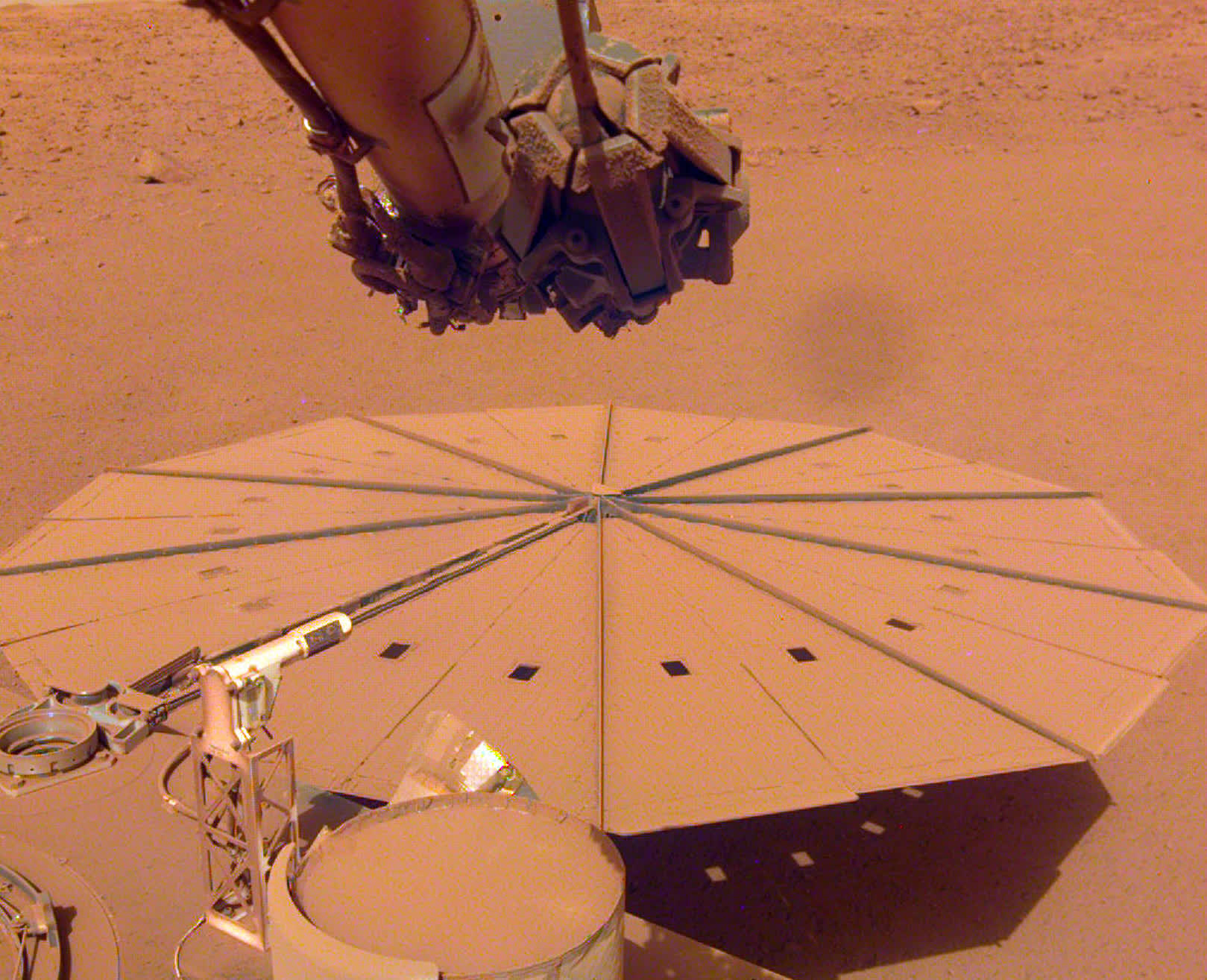In a nutshell: NASA's InSight lander has sent what could very well be its final photo of Mars back to Earth. Earlier this year, NASA noted that InSight's dual solar panels - each measuring about seven feet wide - have been slowly accumulating dust ever since touching down on the Red Planet in late 2018.
The team even used the lander's robotic arm to help remove dust from the solar panels and extend the mission but with seasonal changes putting more dust in the air and blocking sunlight, the future looked grim.
NASA was hoping for a dust-cleaning event such as a passing whirlwind but unfortunately, it never materialized.
My power's really low, so this may be the last image I can send. Don't worry about me though: my time here has been both productive and serene. If I can keep talking to my mission team, I will - but I'll be signing off here soon. Thanks for staying with me. pic.twitter.com/wkYKww15kQ
--- NASA InSight (@NASAInSight) December 19, 2022
On December 19, NASA said the lander did not respond to communications from Earth a day earlier and it is assumed that InSight may have reached its end of operations. The space agency said it will continue to try and contact Insight.
It's unclear if a future cleaning event could remove enough dust from the panels to reactivate the lander, or if it's dead for good once it shuts down the first time. NASA's wording doesn't seem to suggest that being a possibility but again, I'm not 100 percent certain.
InSight, short for Interior Exploration using Seismic Investigations, Geodesy and Heat Transport, was designed to detect seismic activity on Mars. As of this past May, InSight had detected and cataloged more than 1,300 marsquakes including a magnitude 5 quake on May 4, 2022, the largest detected since the mission started.
Lori Glaze, director of NASA's Planetary Science Division, said in May that InSight transformed our understanding of the interiors of rocky planets and set the stage for future missions.
NASA's budget for InSight was $675 million, but an instrument design and a two-year delay added another $153.8 million to the cost. In total, InSight ended up costing $828.8 million.
NASA still has plenty to keep busy with. The Perseverance rover is still hard at work on the Martian surface while the James Webb Space Telescope is just starting to explore the distant cosmos.
